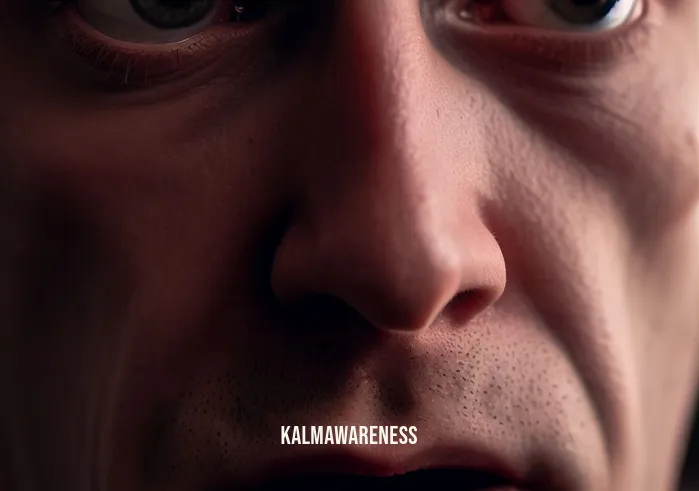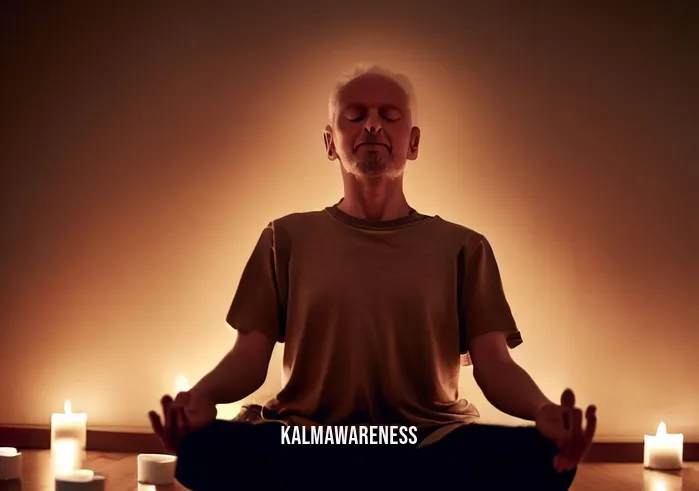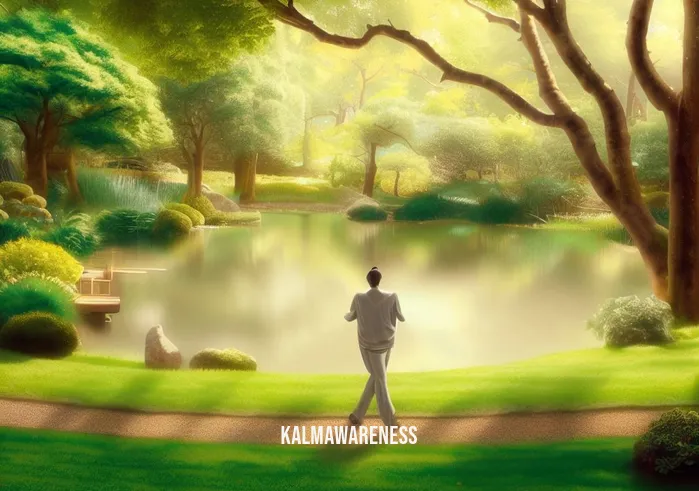Which of the Following Statements Are True Regarding Mindfulness?
Mindfulness, a term increasingly making waves in the spheres of mental health and well-being, is often surrounded by misconceptions. The practice is deeply rooted in ancient traditions but has been modernized to fit today’s fast-paced world. In its essence, mindfulness emphasizes awareness of the present moment, cultivating a non-judgmental and compassionate stance towards one’s experiences. To better understand and demystify mindfulness, we will delve into common statements associated with this practice and explore their validity.
What is Mindfulness?
At its core, mindfulness is the practice of being fully present and engaged in whatever we are doing at the moment. It’s about not being overly reactive or overwhelmed by what’s going on around us. While it may sound simple, achieving this state requires conscious effort. However, the rewards, as highlighted by research on sustainable self-care, are immense, ranging from improved mental well-being to better physical health.
Mindfulness isn’t just limited to meditation, though meditation is a powerful tool to enhance this skill. Activities like mindful hypnobirthing or engaging in mindful movement before sleep are avenues to incorporate mindfulness into daily routines.
Why the Surge in Popularity?
The modern world, with its never-ending demands and distractions, often pulls us away from the present moment. Many have found themselves asking questions like how we get deep so fast in our thoughts or actions. It’s no surprise then that techniques helping individuals stabilize their minds are gaining traction. The process of learning how to spell ‘stabilize’ in the context of emotional well-being involves grounding oneself in the now.
With rising interest, myriad resources have surfaced, guiding beginners and seasoned practitioners alike. Books such as Jack Kornfield’s Meditation for Beginners and tools that make meditation simple provide comprehensive insights into the world of mindfulness.
The Different Facets of Mindfulness
Physical Awareness: This involves being aware of physical sensations. Techniques like touching that specific body part or being conscious of one’s breathing are foundational practices in this domain.
Emotional Awareness: Mindfulness asks us to observe our emotions without judgment. By doing so, we can train ourselves to be stronger than our feelings.
Spiritual Awareness: For those inclined, mindfulness can be a spiritual journey. Practices like mirror gazing for spiritual benefits or engaging in gratitude meditation before sleep can be pathways to deeper self-awareness.
Common Misconceptions
Like any popular concept, misconceptions abound. Some believe that mindfulness involves attaining a peaceful state of mind free from worries. In truth, it’s about acknowledging worries but not getting entangled in them. Another myth is that one can only meditate in a specific posture, but as explored in resources like can you meditate lying down?, flexibility in approach is key.
Conclusion
Mindfulness, with its multifaceted benefits, is indeed a tool for contemporary times. While it encourages living in the present, it doesn’t shy away from the challenges that come with it. As we further delve into this topic, it’s crucial to keep in mind its definition and the foundational principles that guide it.
Are you ready to dispel the myths and uncover the truths surrounding mindfulness? Join us as we delve deeper into these statements, uncovering layers of wisdom, in the next chapter. Continue reading to embark on this enlightening journey.

Truths and Myths: Understanding Mindfulness at Its Core
As the popularity of mindfulness has grown, so too has the cloud of misconceptions surrounding it. Determining which of the following statements are true regarding mindfulness? becomes crucial for those seeking to genuinely benefit from its practices. This chapter seeks to illuminate the truths and debunk the myths, offering clarity to those navigating the intricate landscape of mindfulness.
The Essence of Mindfulness
Before diving into statements about mindfulness, it’s essential to understand its essence. Mindfulness is not just a meditation technique; it is a way of living, a manner of perceiving the world without judgment, and being wholly present. Rooted in ancient practices but adapted for the modern age, it merges the teachings of the past with the demands of the present. The question often arises: what does it really mean to be mindful? As the judgment of the wise would have it, true mindfulness involves non-reactivity, non-judgment, and a compassionate outlook.
The Myths: Unraveling Common Misconceptions
Mindfulness, though a simple concept, is often shrouded in myths and misconceptions. As awareness about mindfulness spreads, it’s essential to discern between what’s factual and what’s fabricated. The following are some commonly believed myths about mindfulness:
Only for Spiritual People: Many believe that mindfulness is exclusively for those on a spiritual journey. While there’s a deep-rooted spiritual component, mindfulness is for everyone. As illustrated in practices such as Rouse Yoga, it is adaptable to individual needs and beliefs.
Requires Hours of Meditation: The belief that one must meditate for hours to reap the benefits is far from the truth. Even a few minutes spent in practices like elementary meditation exercises can be transformative.
Mindfulness Means Having No Thoughts: A prevalent misconception is that mindfulness translates to an empty mind. In reality, it’s about being aware of thoughts and choosing not to engage with them distractingly.
Breaking Down the Truths: A Comprehensive Table
To make it easier to discern between truths and myths, let’s break down some common statements about mindfulness:
| Statement | True/False | Explanation |
|---|---|---|
| Mindfulness requires strict posture during meditation | False | While certain postures can aid focus, mindfulness is about mental state, not physical alignment. |
| Engaging in mindfulness improves overall well-being | True | Numerous studies have linked mindfulness practices with enhanced mental, emotional, and physical well-being. |
| Mindfulness is only about meditation | False | Mindfulness can be integrated into everyday activities like walking or simply being present in the moment. |
| It’s a practice reserved for monks and spiritual gurus | False | Mindfulness, as understood today, is a universally accessible practice and not confined to any one group. |
| Daily mindfulness practices lead to heightened awareness | True | Consistent mindfulness practices, even as simple as daily affirmations like one for each blessed day, can amplify awareness. |
Why It Matters
Understanding the truths of mindfulness isn’t merely an intellectual exercise; it’s the doorway to genuine transformation. By discerning fact from fiction, one can embrace the practice in its entirety, leading to profound shifts in perception, increased well-being, and a deeper connection to the present moment.
Looking Ahead
Having demystified the core tenets of mindfulness, the next chapter dives into its tangible benefits and the transformative effects it can have on our daily lives. As we step further into the world of mindfulness, we’ll explore its impact on mental health, relationships, and overall well-being. Stay with us as we continue this enlightening journey in the next chapter.

Illuminating Hope: The Inspirational Power of Mindfulness
Mindfulness, as a beacon of hope, has become a transformative force for countless individuals worldwide. But what role does hope play in discerning which of the following statements are true regarding mindfulness? How do individuals find solace and motivation in the practice of mindfulness, and how does this affect their daily lives? This chapter shines a light on the inspirational tales that showcase the profound impact of true mindfulness.
The Interplay of Mindfulness and Hope
Hope is not a mere wish for things to get better; it’s an active engagement with the present, an understanding that each moment offers opportunities for growth. As mindfulness promotes an immersive experience of the present, it naturally intertwines with hope, grounding it in reality rather than mere aspiration.
Voices of Hope: Quotes that Resonate
Embedded within the vast landscape of mindfulness are pearls of wisdom that encapsulate its essence and inspire hope. Here are a few that capture the spirit of mindfulness:
- “In today’s rush, we all think too much, seek too much, want too much, and forget about the joy of just being.” – Eckhart Tolle
- “Mindfulness isn’t difficult; we just need to remember to do it.” – Sharon Salzberg
- “The best way to capture moments is to pay attention. This is how we cultivate mindfulness.” – Jon Kabat-Zinn
- “With mindfulness, you can establish yourself in the present in order to touch the wonders of life that are available in that moment.” – Thich Nhat Hanh
- “Attention is the beginning of devotion.” – Mary Oliver
Tales of Transformation
Real-life stories often serve as the most potent sources of inspiration. Here are a few individuals whose lives have been transformed by the power of mindfulness:
Maya’s Journey: Battling anxiety, Maya found solace in mindfulness. Initially skeptical, she delved into meditation practices, gradually finding her racing thoughts slowing down. Her consistent practice not only reduced her anxiety but also improved her relationships, as she became more present and less reactive.
Liam’s Redemption: Recovering from addiction, Liam discovered mindfulness during his rehabilitation. Techniques such as focused walking became his anchors, offering moments of clarity and helping him rebuild his life.
Aisha’s Awakening: A corporate leader constantly under pressure, Aisha was on the brink of burnout. Her salvation came in the form of a mindfulness retreat, where she learned to disconnect from the chaos and immerse herself in the present. This not only revitalized her spirit but also enhanced her leadership skills, as she approached challenges with calmness and clarity.
Why These Stories Matter
These tales aren’t just anecdotal instances but represent a broader spectrum of people who’ve embraced mindfulness to navigate life’s challenges. Each story underscores the truth that mindfulness isn’t a mere tool for relaxation, but a transformative practice that reshapes one’s perspective and engagement with life.
Gearing Up for the Journey Ahead
While the inspirational tales of hope offer a glimpse into the transformative power of mindfulness, the journey is deeply personal and varies for each individual. As we continue to explore the multifaceted world of mindfulness in the next chapter, we’ll delve into the practical aspects—how can you integrate mindfulness into your daily life? What are the challenges you might face, and how can you overcome them? Stay with us to uncover these insights and more in the next chapter.

Mindfulness Unpacked: Delving into the True Statements
With a topic as profound as mindfulness, it’s essential to breakdown, dissect, and present its multifaceted nature comprehensively. Addressing the central question – which of the following statements are true regarding mindfulness? – necessitates an organized approach. This chapter offers a structured exploration using bullet points and lists to provide clarity on this intriguing subject.
Key Principles of Mindfulness
Mindfulness, at its core, revolves around specific principles. Recognizing these foundational elements is crucial for a genuine understanding of the practice:
Being Present: Engaging wholeheartedly with the current moment, without distractions.
Non-Judgmental Awareness: Observing experiences without labeling them as ‘good’ or ‘bad’.
Acceptance: Embracing things as they are, without trying to change or resist the reality.
Compassion: Treating oneself and others with kindness, understanding, and empathy.
Observation without Attachment: Recognizing emotions and thoughts, but not becoming entangled or identified with them. This concept aligns well with the mirror gazing spiritual benefits, where one observes without becoming attached.
Common Practices of Mindfulness
While mindfulness can be practiced in myriad ways, some methods have gained prominence for their efficacy:
Seated Meditation: The classic form, often associated with focused breathing exercises.
Body Scan: Paying detailed attention to various parts of the body, noting sensations without judgment.
Mindful Walking: Walking with complete awareness of each step, a practice explained in detail in walking meditation guides.
Loving-kindness Meditation: Sending goodwill and love to oneself and others.
Mindful Eating: Savoring each bite, being fully present during meals.
True Statements About Mindfulness
Given the numerous misconceptions, let’s bullet-point some verified truths about mindfulness:
Mindfulness is not a religion but a mental practice, although it is deeply rooted in some religious traditions like Buddhism.
It doesn’t require any equipment or special environment; a quiet place helps but isn’t mandatory.
You don’t need to sit in a specific posture; being comfortable is key, whether it’s sitting or even lying down.
Mindfulness isn’t about eliminating thoughts but about observing them without judgment.
Regular practice is more beneficial than occasional long sessions.
Benefits of Mindfulness
A systematic breakdown of the advantages reveals why mindfulness is so revered:
Mental Well-being: Reduces stress, anxiety, and depression.
Improved Focus: Enhances concentration and attention span.
Emotional Regulation: Helps in recognizing and managing emotions better.
Enhanced Relationships: By being present, one can engage more deeply with others.
Physical Benefits: Includes lowered blood pressure, improved sleep, and a boosted immune system.
Preparing for the Culmination
Having dissected the intricate layers of mindfulness, the foundation is set for our final exploration. As we transition to the concluding chapter, anticipate a synthesis of all we’ve learned and a guide on integrating mindfulness seamlessly into daily life. Stay with us as we draw together the threads of understanding in the next chapter.

Mindfulness Demystified: Reflecting on Our Journey
Our voyage through the vast and insightful world of mindfulness has been both enlightening and transformative. We’ve delved deep, unraveling the fabric of which of the following statements are true regarding mindfulness? Now, as we reach the culmination of our exploration, it’s time to glance back, reflect on the revelations, and consider the path forward.
Recapping the Treasures Unearthed
Throughout our chapters, we unearthed many gems:
The fundamental principles of mindfulness, emphasizing presence, acceptance, and compassion.
The myriad practices that enable mindfulness, from seated meditation to the illuminating insights from mirror gazing spiritual benefits.
Real-life tales that showcased the transformative power of mindfulness, from battling anxiety to navigating life’s twists and turns with grace.
The clarity brought by breaking down true statements about mindfulness, equipping us to differentiate fact from fiction.
Harnessing the Power of Mindfulness
The knowledge gained isn’t merely for contemplation but for application. Mindfulness is a living, breathing practice, one that seamlessly integrates into our daily lives. From the way we eat to our interactions with others, the scope is vast and varied. By internalizing the true statements about mindfulness, we not only enrich our understanding but enhance our lived experience.
Embarking on Your Own Adventure
While our shared journey draws to a close, your personal adventure with mindfulness is just beginning. Dive deeper into the nuances of mindfulness with the diverse resources available on our platform. Perhaps starting with our guide on how to achieve a peaceful state of mind would be an enlightening next step.
A Heartfelt Gratitude
To our dear readers, thank you for accompanying us on this enlightening expedition. Your engagement, curiosity, and thirst for knowledge have fueled our quest for clarity. We promise a continual endeavor to bring you more insightful content, nurturing growth, and evolution. Remember, each day offers a new opportunity to be mindful, to embrace the present, and to live with intention.
Looking Ahead with Hope and Inspiration
The world of mindfulness, vast and profound, awaits further exploration. We urge you to revisit previous sections for deeper understanding and to share your personal insights and experiences with us. As you continue to explore, may you find clarity, peace, and an enriched understanding of the present moment.
Until our next exploration, stay curious, stay mindful, and cherish each blessed day.





